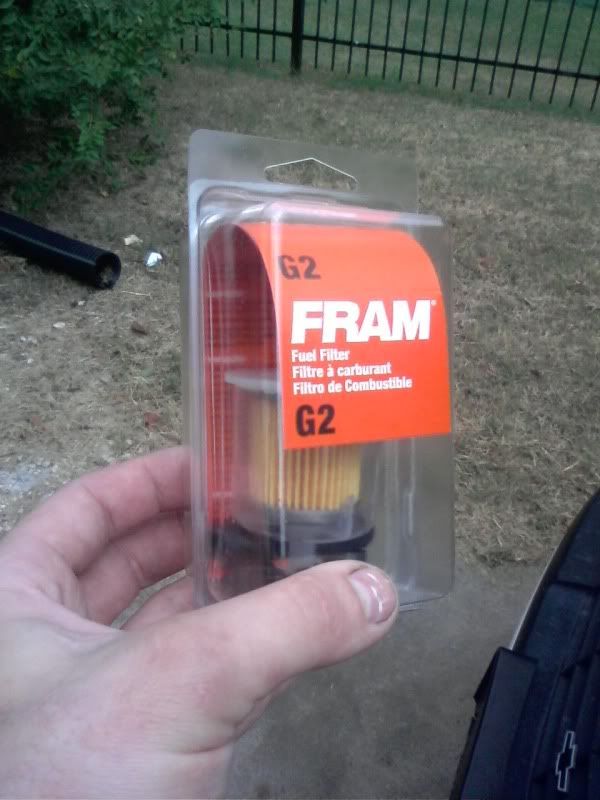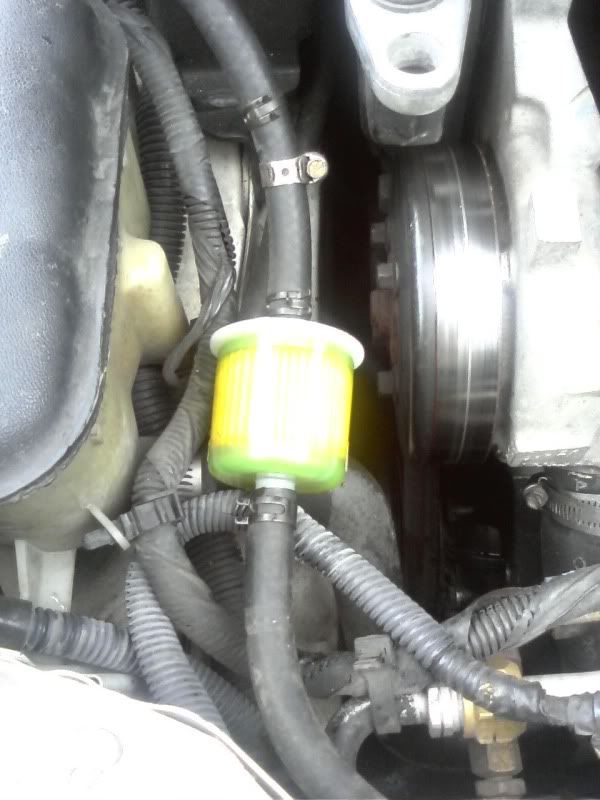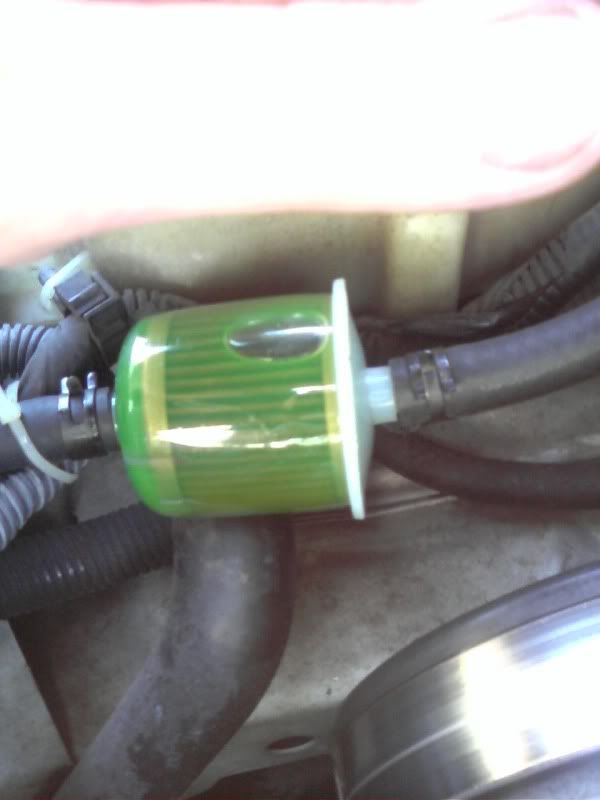This thread is going to document an experiment that I'm trying, for a quick, cheap, and dirty method of adding a coolant filter in an automotive application. I'm aware of the spin-on filters- I deal with them all the time at work. But those are entirely too expensive and require too much under-hood room and ambition on my part. I just don't think that any marginal benefits would be worth the trouble, especially on my 16-year-old beater.
So the other day I saw a clear plastic fuel filter at walmart- with 5/16" hose barbs, which is exactly what I need for my tired old '94 Corsica. This car is well-maintained, but has had a hard life. This was the wife's car when I met her- at the time, it had 80,000 miles and the cooling system was thoroughly sludged by the Dexcool that somebody had converted it to (this car originally came with green coolant, but had some nasty, muddy-looking Dexcool in it by the time I showed up). Long story, but I had the radiator rodded out (this was in maybe 2001), and over the past 9 years the cooling system has been opened up several more times for various reasons (occasional leaks, intake gaskets, etc.). It's been flushed several times and I switched first to conventional green coolant in 2001, then to G05 around 2003. These days the coolant is nice and translucent and the car cools very well- but all these years later there are STILL visible remains of the DexSludge left in the cooling system. All coolant passages and the internals of all hoses are lined with a thin, brown, muddy coating. Even when a new hose is installed, it will be covered inside with this gunk next time I have the cooling system apart. So there should be no shortage of particles for this filter to strain out.
Here are pictures of the filter I used, it its original box and installed:


This car is driven hard and put up wet. It gets several short trips per day- usually between 2 and 9 miles depending on where I'm going. Right now it has 179,000 miles. I set aside some pliers, a couple of spare clamps, a 5/16" hose splice, some coolant, and some water- just in case this experiment fails catastrophically in the 100+ degree heat we've been having lately. I'll post updates as the experiment progresses, and maybe a new picture or two if there are visible changes.
I realize that the glue used in this filter may be water-soluble... the thing may just come apart internally. I'm quite sure that this filter can withstand the 15 psi pressure, but it might not deal well with the heat. We'll see. But I think an old beater like this with a known dirty cooling system (and a fairly new and functioning pressure cap) is a good test vehicle. If it works well, I might do something similar on the wife's car.
Edit: I see that the installed picture has a glare problem. I'll try to get a better picture before putting any miles on it.
So the other day I saw a clear plastic fuel filter at walmart- with 5/16" hose barbs, which is exactly what I need for my tired old '94 Corsica. This car is well-maintained, but has had a hard life. This was the wife's car when I met her- at the time, it had 80,000 miles and the cooling system was thoroughly sludged by the Dexcool that somebody had converted it to (this car originally came with green coolant, but had some nasty, muddy-looking Dexcool in it by the time I showed up). Long story, but I had the radiator rodded out (this was in maybe 2001), and over the past 9 years the cooling system has been opened up several more times for various reasons (occasional leaks, intake gaskets, etc.). It's been flushed several times and I switched first to conventional green coolant in 2001, then to G05 around 2003. These days the coolant is nice and translucent and the car cools very well- but all these years later there are STILL visible remains of the DexSludge left in the cooling system. All coolant passages and the internals of all hoses are lined with a thin, brown, muddy coating. Even when a new hose is installed, it will be covered inside with this gunk next time I have the cooling system apart. So there should be no shortage of particles for this filter to strain out.
Here are pictures of the filter I used, it its original box and installed:


This car is driven hard and put up wet. It gets several short trips per day- usually between 2 and 9 miles depending on where I'm going. Right now it has 179,000 miles. I set aside some pliers, a couple of spare clamps, a 5/16" hose splice, some coolant, and some water- just in case this experiment fails catastrophically in the 100+ degree heat we've been having lately. I'll post updates as the experiment progresses, and maybe a new picture or two if there are visible changes.
I realize that the glue used in this filter may be water-soluble... the thing may just come apart internally. I'm quite sure that this filter can withstand the 15 psi pressure, but it might not deal well with the heat. We'll see. But I think an old beater like this with a known dirty cooling system (and a fairly new and functioning pressure cap) is a good test vehicle. If it works well, I might do something similar on the wife's car.
Edit: I see that the installed picture has a glare problem. I'll try to get a better picture before putting any miles on it.
Last edited:











